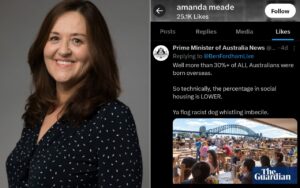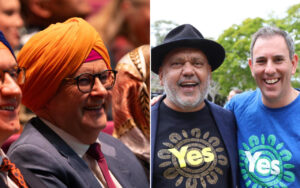A University of Sydney academic has accused Australia’s higher education institutions of running a scam where they effectively sell work visas, exacerbating the country’s housing crisis in the process.
Associate Professor Salvatore Babones hit out at the industry in a scathing interview with news.com.au where he revealed Australia now takes 8% of the world’s international students, and said Nepalese and Indian students were exploiting a rule allowing the spouses of postgraduate students to work.
“The scam – and I call it a scam, or a rort – is that universities are allowed in effect to sell work visas in exchange for free cashflow that they can direct to their own research priorities,” he said.
He explained that the fees paid by international students were used by universities to attract high-citation researchers from abroad in order to improve their world rankings, only benefiting the universities, the students and the researchers.
“Australians don’t benefit, the government doesn’t benefit, Australian students don’t benefit. Everyone pays higher rent in the city. It really is a scam,” said Mr Babones, who also emphasised that as an American immigrant who teaches international students himself he was “very sympathetic” to them.
Mr Babones went on to address claims that education is an “export” which brings in $40 billion a year, saying that in reality Indian and Nepalese students “game the financial requirements” by getting tuition loans, which are then paid off by part-time work and full-time working spouses, meaning the same amount of money then leaves Australia again.
The fact that Nepal is Australia’s third-largest market for international students made it clear that their visas were “indirect work visas for spouses”, he said.

Mr Babones also showed that “simple math” contradicts widely published claims by the Property Council lobby group’s Student Accommodation Council (SAC) that international students are not causing rising rents or low vacancies.
The SAC said in April that international students had “unfairly worn the blame for Australia’s rental crisis”, and released a report with statistics showing that only 13 out of 556 local government areas had more than 10% international student renters, and that 73% had a concentration of less than 1%.
But Mr Babones said that since the national vacancy rate was 1%, that meant that international students were actually having an outsized effect.
“If there were no international students, in 27% of LGAs the rental availability, by a very rough cut according to their analysis, would double. And that’s only for LGAs where the concentration is 1%. For those that are above 10% or up at 24%, that’s incredibly warping to the rental market,” he said.
Adelaide and Burwood have the highest concentration of international student renters at 24% each, followed by Melbourne with 21.8%, Strathfield on 17.6%, Bayside (NSW) on 15.8% and Sydney on 14.6%, according to the SAC report.
SAC executive director Torie Brown told news.com.au in response to Mr Babones that removing international students from the LGAs with the highest rates “wouldn’t add a huge amount of general rental stock back into the market” because so many were living in dedicated student accommodation buildings.

















